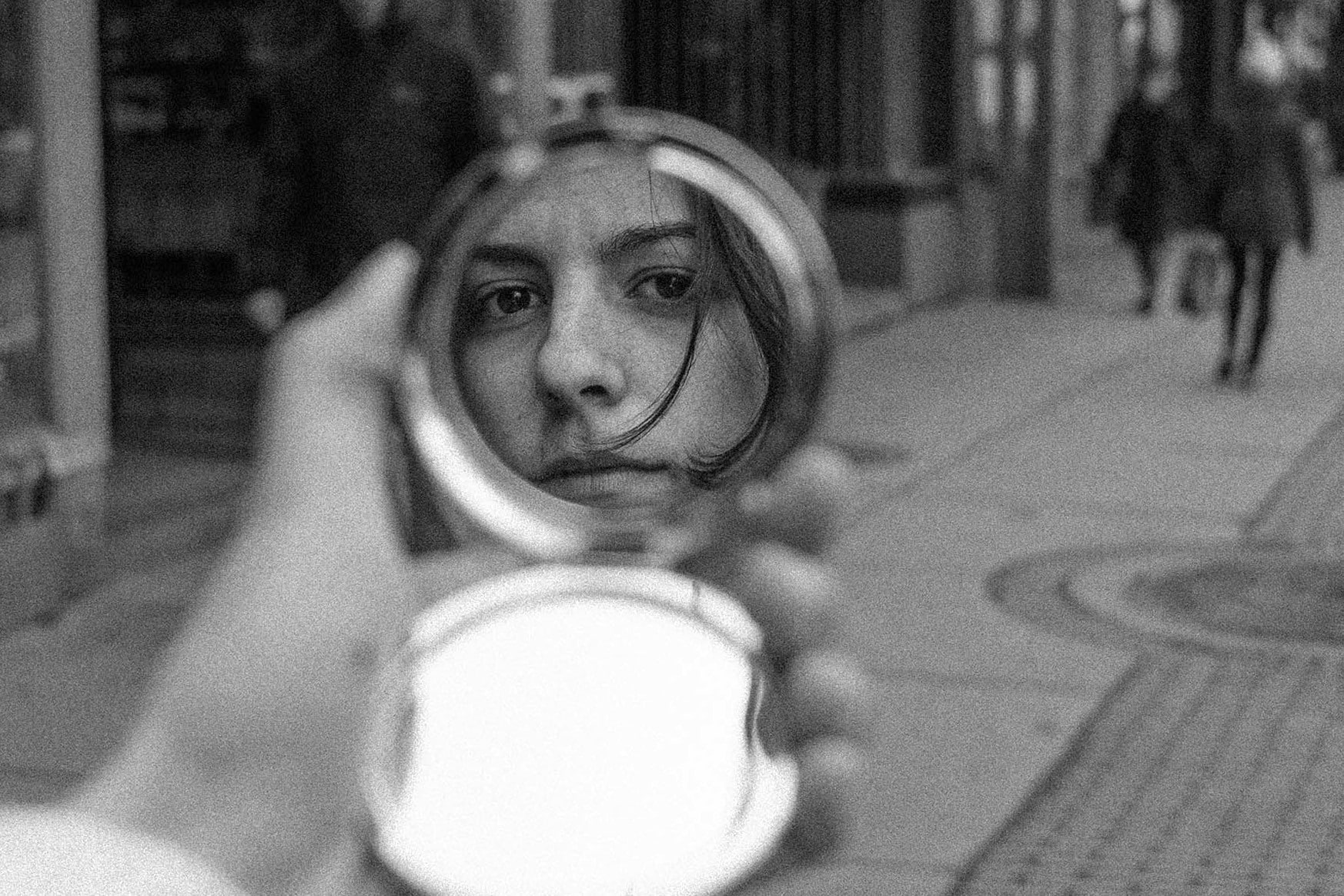In film and television, the eyes are the main focal point of the audience. More than any other facet of acting, they determine the internal workings of the character. They also determine the target of intentions and feelings. In addition, they help define the mental state of the character. With such immense importance, one would think instructors would spend more time addressing eye behavior. This lack of attention is largely because much of their training centers on theatre rather than for the camera. The camera adores the eyes while the theatre adores the words. One is behavior, the other verbal.
With the character’s internal thoughts and feelings, the eyes delineate the areas of concerns. They place them into proper compartments or zones that relate to the audience. This is because in normal life people move or divert their eyes in set patterns that signify the topic or issue under discussion. When one studies and dissects the performances of award-winning and highly acclaimed actors one will find these eye behaviors prevalent. Observation and realization of these compartments is key to effective eye acting.
For instance, when we search for a word or attempt to solve a problem, our eyes go to an area where there are little distractions and away from the person to whom we are talking. In film, this is usually to the camera side or best-lit side and below eye level. With a difficult problem, it tends to be lower to avoid every distraction. The eyes slowly drift about unfocused in an undefined area. As a solution is realized, eye movements might become faster and more defined. This look-away area allows concentration on the problem.
The next category is the recall and is usually more a look-to than a look-away. This recall could be feelings, or events remembered. It might also be real experiences, dreams, or even envisioned expectations. The eye movements here, likewise, have certain defining characteristics. Here the eyes are more focused and drawn to unseen images. It’s almost as if these images play out on a small TV screen suspended before the character just above eye level. These images are normally to the audience or camera side. Such eye behavior allows the audience to visualize these unseen images generated by dialogue or dramatic circumstances.
In a two-character scene, you will also be looking at the person to whom you are talking or listening. The eyes will reveal the level of engagement, whether you’re actually listening or just hearing them. The eyes will also reveal key thoughts like recognition, reflections, realizations, and expectations. They also reflect comprehension and questions. A dialogue scene can become highly dynamic because of the visual exchanges.
The eyes display an emotional connection, i.e., curiosity, compassion, desire, lust, fear, contempt, jealousy, etc. When there is a non-verbal give and take, the characters define better their wants, feelings and attitudes. Relationships can also be established or revealed through eye behavior.
Where does one look when conversing? For the most part, you will look at their eyes. To keep your eyes from darting back a forth between the two eyes, concentrate on one eye. Normally this is the camera-side eye. The lips and mouth area should also receive some attention and less remote are the clothes they wear. There may be some discomfort looking into someone’s eyes and this can be overcome by directing your gaze at a particular detail; say an eyelash or a flaw in the iris. By doing so, you overcome the discomfort of being the observer while being observed. It also moves you into patterns and habits whereby your eye behavior supports your character and does not betray you as an actor.
In a dialogue scene, the eyes will also drift to a comfort zone, an area up camera slightly below eye level. This area is used to digest or reflect on an issue in the conversation. It is also be used to prepare a phase or rebuttal or gather one’s thoughts. The comfort zone is smaller and higher than the problem area and the time spent there is brief. Eyes are unfocused and movements limited.
There is another area I call avoidance. This eye behavior conveys an inability to confront certain thoughts, images, or feelings. Feelings such as fear, embarrassment, shame, or guilt. An avoidance-look-away reveals the vulnerability of the character and is most dramatic when directed to the dark side, the side away from the audience or camera. This look-away avoids the traditional focal zones, especially those of other characters, and is thus extreme in direction and spatially undefined. The eyes dart about, evade connecting and the angular alignment of the eyes and nose (angle between the eye direction and where the nose points) is more acute.
It helps to visualize these eye behavior focal zones and this illustration will aid in locating them. This link depicts the most common arrangement. There are many other arrangements of these focal zones.
There are other facets of eye acting. Eye movements can either lead or lag behind head movements. This subtle difference determines which is more important, the new image or the one be left behind. It can imply the difference between the emotions such as suspicion and envy. Suspicion would linger and lag while envy would lead the head movement.
Speed is also a factor in eye movements and can help portray the mental state of the character. Slow fluid movements might be associated with a relaxed person while a hyperactive one would likely have rapid eye movements.
The relative size of the eyelid opening reflects the emotional state of the character. For instance, astonishment might be portrayed with open eyes while contentment would be slightly less than normal. When we are engaged in a conversation, the eyelids are slightly expanded while excitement is express by brighter eyes.
Eye blinks are also an expressive tool. One who cornered in their own lies may blink incessantly while a stern character disciplining a subordinate may only blink as a way of punctuating the consequences. The lack of blinks in a love scene could be a way of implying sincerity and desire. Blinks are often used to end a strong statement and are ideal cutting points for editors.
The eyes are also instrumental in reflecting one’s emotions. For instance, fierce anger is a tense, coiled for action emotion. The focus is highly concentrated. The eyes become constricted with a slight squint and the pupils widen. Another emotion, joy, has a wide range of physical traits: misty eyes, tears, laughter and high emotional energy. It’s an out-pouring of feelings, of being fully one’s real self. The eyes depict joy as if it were a surprise, a celebration of life. Tears and misty eyes give credibility to this emotion. When emotions are not enough, by not blinking your eyes the pollutants in the air will soon irritate the eyes enough to tear up.
Eye-nose non-alignment is often used in scenes where the character is critical or questioning the issue at hand. The more acute the angle between the nose and eye direction the more adverse the critique. Do not confuse this angle with the actor cheating toward the camera or into the key light.
Head turns allow the eyes to comment on a situation. Let’s say the character hears someone enter behind him. Most actors would turn their head to see who it is. But if the eyes first comment on who it is or who it might be we allow a revealing dramatic moment to exist. Highly acclaimed actors use this two-step recognition to build up their characterization.
Eves dropping is another area where the eyes can depict a listening action. The eyes and head turn slightly in the direction of the voice and the eyes find a comfort zone for complete acquisition. The same behavior is evident in side-by-side conversations. The eyes listen and acknowledge the dialogue. All too often, young actors feel they have to connect eye to eye. Instead, the conversation becomes more powerful when we see them listening and commenting in a non-verbal way. Small eye movements signify this connection.
Such a technical approach to eye behavior is often looked upon as mechanical acting and that the performance will lack credibility. One must remember that acting is a language of behavior and that its articulation is as important as that of diction. As one acquires these behaviors, they will soon become an instinctive and a natural part of your acting repertoire. They become organic through constant use.
Eye behavior tells us something about the character’s intentions, attitudes, aspirations, and problems. It can spotlight moments of realization as well as areas of interest and avoidance. It’s a gauge by which we can measure the level of involvement or lack there of, and appraise the integrity of the character. It also allows the drama to play out in the mind of the audience as they question, speculate, and reflect on the character’s predicament.
The potential of the eyes to communicate is often overlooked and seldom given its due consideration when training actors. Yet, when you analyze the performances of the great actors in their award-winning roles, you’ll find a consistent behavior with regard to the eyes. And to know and understand this part of one’s acting craft opens the door to effectively articulating the character’s inner thoughts and feelings.





